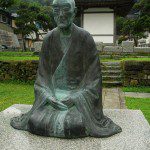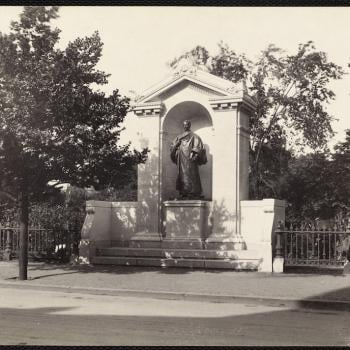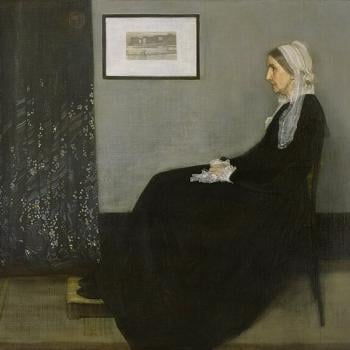The World in a Blade of Grass: Case 4, Book of Serenity
A Reflection
James Myoun Ford, Osho
Boundless Way Zen West
Once upon a time the World Honored One was walking with gods and devas and humans, when he paused. He pointed to the ground and said, “this is a suitable site to build a temple.” The god Indra then plucked a blade of grass from nearby, and stuck it into the ground at the spot where the Buddha had pointed. Indra declared, “The temple is built!” The World Honored One smiled.
Book of Serenity, Case 4
This little anecdote is delicious addition to the koan literature, those short anecdotes, bits of poetry, and fantastiche that point to some aspect of the real and invite us into intimacy. The three great koan anthologies compiled in the twelfth and thirteenth centuries, the Gateless Gate, the Blue Cliff Record, and the Book of Serenity share a lot of duplication. However, this particular case only appears in Serenity.
The Book of Serenity, or Book of Equanimity, or Book of Composure, or, as the Zen teacher Dosho Port likes to render it the Record of Going Easy, was first compiled by the Caodong/Soto master Hongzhi Zhengjue sometime near the beginning of the twelfth century. Eihei Dogen, not one particularly generous with his complements for the masters of antiquity referred to Hongzhi as that “old Buddha.”
The edition we know was published by a master in Hongzhi’s lineage, Wansong Xingxiu. A generation after Hongzhi he took the compiled cases, added a preface, some notes, and extensive commentaries. At this point the only complete edition of the text in English is Thomas Cleary’s Book of Serenity.
While appreciated across the Zen world, this book becomes critical in the formation of Master Daiun Sogaku Harada’s reclamation of koan introspection within the Japanese Soto school. Together with those other two collections, the Gateless Gate and the Blue Cliff Record the Book of Serenity forms the heart of what some call the “Harada Yasutani” curriculum.
And, with this case, we get a sense of why this might be so.
If you’re interested in the secret teachings of Zen, here you go: form is emptiness, emptiness if form. If that isn’t clear, let me expand: form is exactly emptiness, emptiness is exactly form.
And, yes, it might be helpful to unpack those words form and emptiness just a little. Form is the world within which we all live and breath and have our lives and will face our deaths. It is a constant play of conditions interacting in multifaceted ways, where some circumstances flow together, and, oh, my, you are born.
Those circumstances and conditions continue on shaping who you are. And, at some point those circumstances and conditions will pull apart, or, enough of them, or a critical one, and, well, so will you. The “I” that arose out of those circumstances will disrupt and cease to be.
Now, of course, so will I. So will everyone and everything within this blessed world, and beyond. All things made of parts exist for their glorious moment, take that place on the great stage, and then the lights fall, the audience departs, and, so do the actors.
There is a divide within Buddhism whether that bundle of circumstances and conditions which result in an individual consciousness persists over lifetimes, or not. For our purposes here, whichever is correct, is not relevant to the fundamental matter. Particularly not within Zen which hold up the reality that we can achieve liberating insight right here, and in this very moment. The relevant point is that the we, the “I” which arises, arises epiphenomenally, out of those circumstances. And, will, in time, disburse. The bottom line is this. That sense of an abiding self is functional, but has no substance. We are real, but we are temporary.
However, there’s another reality. A reality just as true as the reality of separation, individuation, and passingness. It can be intuited logically. Taking a big enough view we can notice how we are all connected in that field, that play of causality. And we can move beyond inference, to a direct insight, a knowing, or, really, it is more an “unknowing.” It is a getting at the level of bones and marrow that in some very real sense all of this is one. There is one universe and we are all parts within the completeness. We are moments in a dynamic interdependent web that is existence.
And there is something more about this. Again, something that can be logically inferred, but which can also be experienced existentially. This web is infinite, and with that each moment within it can be said, and with more than a logical assertion, that moment can be said to be the center of all things.
Now, again, none of these things, in isolation, nor in their aggregate has anything special or ongoing about it. There is no soul in the sense of something occupying our bodies like a passenger in a bus. Nor is their some great over soul. No extra bits. But, within the fact of our essential emptiness, an emptiness that includes everyone and everything, there is a transformative encounter. What there is, is intimacy.
Here we move beyond ideas, or, inferences, and find ourselves invited into a great mystery. Here we find that map must be followed if we want truly to understand. And here there is a great turning. While there is no reason I can see that it need be this way, what we find as we encounter this emptiness is not sadness or despair. Rather we encounter peace, we find joy, we discover a sense of intimacy that while words fail, the encounter carries us right through death and beyond.
Zen’s little secret is that we can experience intimacy with that world of form and that world of emptiness. It isn’t one or the other. It isn’t our dirty flesh here and the heavens above. Rather it is a play of knowing and not knowing. Now this, now that. And, all of it more intimate than my words can even hint at. As the prophet Mohammed once said of God being closer to the individual than that person’s jugular vein. An intimation of the call of intimacy.
All of Zen’s little tricks of our trade are about helping us to find and to stand in those places where we encounter form as emptiness and emptiness as form. This invitation is into our deepest intimacy. We find it within our invitation to sit and be present. And we find it with each koan.
So we are given a koan, a direct pointing, and an invitation. The rest is up to us. Us, and the movement of grace. In this particular koan we’re given a bit of a fairy tale. Here Gautama Siddhartha is taking a walk. However instead of the figure of history, walking a hot and dusty road, probably sweating, and with companions that may not have had a bath in a while, we have the World Honored One, shimmering and light, accompanied by angels and by gods. Here one of the more important of those deities, Indra is his close companion.
In this fairy tale a moment is presented. The Buddha points to a spot and declares this is a propitious place to build a temple. He has no need of consulting astrologers or an authority on geomancy. He knows all, he sees all, and this is a perfect spot.
And, then like that proverbial box and its lid, the god Indra plucks a single blade of grass and sticks it into the ground. When Indra gathers the stalk of grass, Hongji calls it the “sixteen-foot body of the Buddha,” an old metaphor for all of existence. Here, form and emptiness indeed come together. No separation.
However it is no longer some abstract philosophical assertion. It is this bit of ground, and it is that stalk of grass. Just this. Just this. No separation. Just the intimate.
Zen and Buddhism don’t own this truth. Humans have the capacity to discover this whatever our condition. So, William Blake can declare:
To see a World in a Grain of Sand
And a Heaven in a Wild Flower,
Hold Infinity in the palm of your hand
And eternity in an hour.
Also this isn’t a matter of our earning it. Our invitation is into something beyond our earning or our being gifted. These words are only angles on something deeper. In this encounter as we get in in the Book of Serenity we have the fairy tale and the historical figure collapsed together. Perhaps this can help. Consider this story a pointer.
We have the god-like person who sees into the heart of the universe and is conversant with deities as well as humans. An outstretched hand that glows with a slightly unearthly beauty points to a spot of earth and declares, “This is a suitable site to build a temple.” And at the same time we have that person living and breathing, sweaty, and a little dirty, someone who feels the aches in his bones as he ages, and pangs of hunger as the day rounds out, and who eventually will grow ill and die. This person this Gautama Siddhartha with a perhaps slightly dirty finger points at a bit of soil and says, “Here we go. We can build a temple right here.”
We have a god responding with the grace of heaven, bending gently, sacred music hanging in the air, plucking a perfect slender stalk of grass and placing it in that holy soil. And, at the very same time, in exactly the same spot, some companion of Gautama’s, dirty, and sweaty, and possibly not very well educated, maybe by the standards of the world not even particularly bright, and, maybe even from the wrong class or country, but one who has opened his heart to wisdom, picks up a stalk of grass and sticks it into the ground. He looks to his teacher and declares, “It is built!”
Here heaven and earth meet. Here our dreams and our reality come together. Form. Empty. One thing. Our very lives the full and sufficient presentation. Here, where this no room for another thing. Full and complete.
With that the Buddha smiles.














